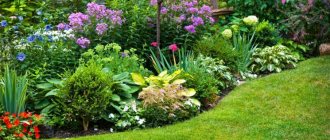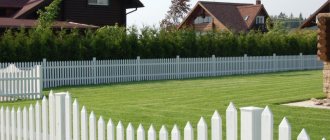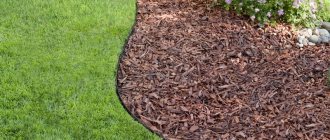If you plan to insulate your soil with mulch before the season changes, you first need to understand what type of material will best suit your needs.
Mulch may not be a miracle cure for everything that's hurting your garden or lawn, but according to professional gardeners, it does a pretty good job! There are a wide variety of mulch materials available, and they all have one main purpose: improving soil conditions . This product insulates the soil from extreme temperatures, retains moisture, inhibits weed growth, prevents soil compaction and protects sensitive plantings from damage by lawn mowers. In addition, almost all types of mulch can give the beds an attractive and well-groomed appearance.
Organic mulch: wood shavings, wood chips and bark.
Hardwood and softwood bark, woodchips and sawdust - waste products from the forestry and paper industries - are usually cured and dried, and sometimes even dyed red or black, and then sold in bags. Hardwoods are best for trees, shrubs and perennial plantings, while softwoods (usually made from pine) should be used for mulching around large trees and shrubs. It should be noted that pine takes longer to decompose than other organic mulches.
Types of mulching
Commonly used types of mulch:
- Wood chips;
- Pine bark;
- Larch bark;
- Needles;
- Hardwood sawdust;
- Foliage and grass.
- Nut shells
- Marble chips
- Synthetics, covering material
Wood chips are used for perennial plantings. Its advantage is that it does not decompose over a long period of time.
Pine bark is very popular among owners of dachas and personal plots. This product is constantly used by landscape designers. Pine chips improve the aesthetics of the appearance of the site. The product on sale can be painted in different colors, thanks to which you can create amazing pictures and patterns in your yard.
Tree bark is also a good mulching material. This product has a high nitrogen content. Therefore, it is used not only for the purpose of decorating the site, but also for practical purposes. This type of mulch helps retain moisture in the soil, slows down the growth of weeds and prevents the emergence of new pest plants. In addition, tree bark helps normalize soil thermoregulation.
What are the benefits of using larch mulch? It effectively supplies plantings with useful substances, retains moisture in the soil, and inhibits the growth and spread of weeds in the area. Using larch bark mulch, soil compaction can be avoided. Also, the soil will not need frequent loosening.
An interesting option with cedar, peanut and other shells. Despite its organic appearance, this type of coating is unlikely to last longer than bark, much less synthetics.
Marble chips are a very beautiful material with a large palette: quartz, malachite, shades of red. This is a stable material that does not lose its properties over time. The only thing worth thinking about is shrinkage and leaching of marble particles into the soil, so we recommend laying agrofibre or geotextile under it
Organic mulch: straw
Clean wheat, barley or oat straw is ideal for lightly mulching newly seeded lawns. Straw mulch keeps grass seeds from washing away and retains the moisture the seeds need to germinate well. When you buy mulch, don't confuse straw with hay, as it contains seeds that can grow as weeds in your beloved lawn.
Organic mulch: grass clippings or shredded leaves
This is a great way to save money on your family budget; there is no need to purchase a special product—you can make your own organic mulch using grass clippings or shredded leaves. This option is ideal for use in garden beds and around trees and shrubs, while grass clippings can be spread in a thin layer over vegetable and perennial beds and then turned into soil at the end of the growing season.
When to mulch the soil?
To understand when to cover the soil with mulch, let's look at the natural processes that occur in nature.
Nature covers the soil in the fall and thus prevents it from remaining “naked” in winter, so to speak, nature dresses the soil in winter clothes.
But if we look even more closely, we will see that in fact, the soil is covered with plant material all year round.
Therefore, the answer to this question will be: mulch all year round, your task is to ensure that the soil is always covered and does not remain “bare”.
In spring, you need to mulch when the soil has already warmed up.
There is no need to mulch plants that are afraid of moisture, such as garlic and onions.
Organic mulch: newspaper or cardboard
Shredded black and white newspaper or unpainted cardboard without a glossy finish can be used as an effective way to kill weeds. Apply two to three layers at a time, then cover with other heavier organic material, such as leaves or grass clippings, to hold the light mulch in place. Be careful not to use colored paper or coated cardboard as mulch - such materials are quite difficult to decompose and can harm your garden with toxic elements.
Decay
Unlike pebbles and sand, no one needs autumn leaves. Some species, such as oak, aspen and weeping willow, release bitter substances during decomposition that prevent the development of pathogenic bacteria, but inhibit the growth of garden crops. It is reasonable to cover winter crops and berries with “harmless” foliage.
With litter, it is easy to introduce infection or pests into the area, as well as poison the soil with heavy metal salts if you collected raw materials along a busy highway.
Organic mulch: pine cones
Ordinary pine or spruce cones collected from a coniferous forest can be an excellent material for mulching shrubs, trees and perennial flowers. A dense layer of such organic matter can protect plants from drying out in summer and from severe frosts in winter. Also, do not forget about the aesthetic part of this type of mulch; cones can create an incredible exterior on any type of site.
How to mulch potatoes?
You can mulch potatoes immediately after planting or wait until the soil warms up.
The mulch layer should be about 8 cm thick.
Any biodegradable material is suitable for potatoes, but straw is most often used for this purpose.
Straw is an obstacle to Colorado beetles and other insects.
From time to time it is necessary to check the condition of the mulch and add it to those places where the layer has become thin.
Organic mulch: composted animal manure
When it comes to mulching vegetables, nothing beats well-composted, nutrient-rich animal manure. However, before you add this type of mulch to your garden bed, you should be aware that fresh manure burns plant roots, and dog, cat, and pig manure can contain disease-causing organisms.
Inorganic mulch: pebbles or crushed stones (stones)
Pebbles, gravel, various stones, expanded clay are an excellent option for creating ideal paths or paths in your garden. Be careful when using stones in the root systems of trees, shrubs and other plants; they will not retain moisture and can cause additional heat stress, as well as heating the soil, which can burn the roots. This type of mulch works best on top of perforated polyethylene with special holes through which water will penetrate for irrigation.
Inorganic mulch: dense black film or non-woven material
Black plastic film is impermeable, so water and other nutrients cannot pass through it. Although this quality makes the material ideal for weed control, the film is not suitable for long-term use. If you are using the film to warm the soil around your fruit and vegetable plants, you will need to install an irrigation system underneath it, another option is to water your plants by hand.
Be sure to remove this non-woven fabric at the end of the growing season.
Before using this type of mulch, saturate the soil with mineral and organic fertilizers.
Inorganic mulch: agrofibre
Agrofibre is the best choice for long-term use as it prevents weed growth while allowing air and water to pass through. Use it with a layer of organic mulch on top, wood chips work great for this.
This type of mulch does not suppress the root system and prevents the mail from drying out.
Inorganic mulch: stone, marble and ceramic chips
This type of mulch is perfect for weed control and as a decorative element in landscape design. This material is quite strong and durable; it will fit perfectly as garden paths, in flower beds and along with wooden beds.
It should be remembered that stones can actively absorb and reflect heat; in hot and sunny weather they become hot, so frequent watering is simply necessary for such mulching.
Effect of use
- Helps maintain a constant ground temperature, cooling in summer and providing protection from cold in winter;
- stimulates the growth of beneficial soil microorganisms;
- reduces the risk of infection of ornamental crops, berries (strawberries, wild strawberries) and vegetables with fungal diseases, and also prevents them from contamination as a result of contact with the ground;
- is a good protection against pests;
- improves soil health, enriches it with nitrogen and other useful microelements, protects them from leaching and weathering;
- protects against moisture evaporation during hot periods;
- limits weed growth.
Beginner gardeners, be careful!
Excessive mulching, especially raising mounds around the root systems of trees and shrubs, can lead to insect and rodent problems. Additionally, mulch that is too deep can cause excess moisture to accumulate in the root zone, which can lead to plant stress and root rot. Most experts recommend limiting the mulch layer to a depth of five to ten centimeters .
Follow us on Pinterest for more inspiration.
How to mulch?
- Before covering the soil with mulch, it must be weeded very well.
- Mulch should not be adjacent to the stem or trunk of the plant.
- Do not mulch in strong winds.
- You cannot mulch frozen soil; you need to wait until it warms up.
- The soil must be watered before and after mulching.
- The minimum layer of mulch should be 5-8 cm. With the exception of some materials.
- In the shade, the layer of mulch should be less than in a sunny place. In the shade, a 3-5 centimeter layer will be enough, and in the sun, 5-8 cm.
- Add 2-3 cm of mulch each year to compensate for decomposed material.
- From time to time you need to ensure that the mulch does not clump.











